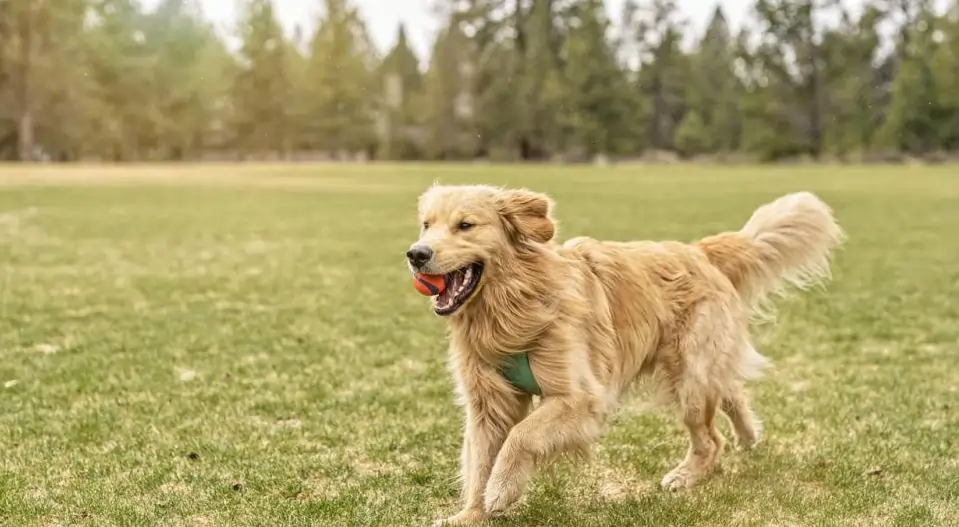The Golden Retriever is more than just a dog; it is an icon of loyalty, intelligence, and gentle companionship. Known for their friendly nature, unwavering devotion, and stunning golden coat,
Golden Retrievers have captured the hearts of millions of dog lovers around the world. Their remarkable versatility, whether as family pets, service animals, or working dogs, makes them one of the most popular and beloved breeds today.
This article delves into the rich history, characteristics, health care, and roles of Golden Retrievers in modern society.

The Origins and History of the Golden Retriever
The Golden Retriever’s story begins in the Scottish Highlands during the mid-19th century.
At that time, hunters needed a dog that could retrieve game from both water and land, as hunting was becoming a popular pastime among the wealthy.
The ideal hunting dog would need to be intelligent, loyal, and have a natural aptitude for water retrieving, which was a significant challenge in the rugged Scottish terrain.
Sir Dudley Marjoribanks, later known as Lord Tweedmouth, is credited with developing the Golden Retriever breed.
In 1868, Lord Tweedmouth crossed a yellow-colored retriever named Nous with a Tweed Water Spaniel named Belle. The Tweed Water Spaniel, a now-extinct breed, was known for its aptitude in water retrieval and its calm temperament.
The resulting litter produced several puppies that would lay the foundation for the Golden Retriever breed. Over the years, further breeding with Bloodhounds, Irish Setters, and other retrievers helped refine the breed’s characteristics.
The Golden Retriever’s popularity began to spread beyond Scotland during the early 20th century. They were officially recognized by the Kennel Club in England in 1903 and by the American Kennel Club (AKC) in 1925.
Since then, the breed has become a favorite in both the UK and the United States, where its versatility, intelligence, and affable personality have cemented its status as one of the most cherished breeds.
Physical Characteristics of the Golden Retriever
Golden Retrievers are medium to large-sized dogs that are well-proportioned, muscular, and athletic. Their physical appearance is as iconic as their temperament, with their lustrous golden coats being their most defining feature.
While the breed is famous for its warm golden hues, the coat can range in color from a pale cream to a deep, rich gold.
The breed is characterized by its broad head, friendly and intelligent expression, and dark, expressive eyes. Their ears are moderately sized and hang down close to their cheeks, giving them a gentle appearance.
Golden Retrievers have a strong, straight back, with a powerful, slightly arched neck. Their tails are thick and carried with a slight curve, further enhancing their graceful and friendly demeanor.
Golden Retrievers have a double coat that is water-repellent, a trait inherited from their ancestors, who were bred for retrieving waterfowl.
The undercoat is dense and soft, while the outer coat is longer and may be straight or slightly wavy. This double coat serves to protect them from cold water and harsh weather conditions, making them excellent swimmers and outdoor companions.

In terms of size, male Golden Retrievers typically weigh between 65 to 75 pounds and stand 23 to 24 inches tall at the shoulder.
Females are slightly smaller, weighing between 55 to 65 pounds and standing 21.5 to 22.5 inches tall. Despite their size, Golden Retrievers are known for their gentle and approachable nature.
Temperament and Personality of the Golden Retriever
One of the most appealing qualities of the Golden Retriever is its temperament. Known for being friendly, reliable, and trustworthy, Golden Retrievers are the epitome of the ideal family dog.
Their eagerness to please, coupled with their gentle disposition, makes them highly adaptable to various environments and situations.
Golden Retrievers are often described as “people-oriented” dogs. They thrive on human companionship and are known for forming strong bonds with their families.
They are naturally affectionate and love being involved in family activities, whether it’s playing in the yard, going for a hike, or simply lounging around the house.
Their social nature means they typically get along well with children, other dogs, and even cats, making them a great choice for multi-pet households.

One of the key traits that sets Golden Retrievers apart from many other breeds is their patience. They tend to be calm and tolerant, which is why they are often recommended for families with young children.
However, it’s important to note that while they are patient, they are also highly energetic dogs that require regular exercise and mental stimulation to remain happy and well-behaved.
Golden Retrievers are also known for their intelligence. Ranked as one of the smartest dog breeds, they are quick learners and highly trainable.
This intelligence, combined with their eagerness to please, makes them excellent candidates for obedience training, agility courses, and other canine sports.
Their cooperative nature also means they excel in service roles, including as guide dogs for the visually impaired, therapy dogs, and search-and-rescue dogs.
Despite their many positive qualities, Golden Retrievers do have a few challenges. Their friendly nature means they may not make the best watchdogs, as they are more likely to greet strangers with wagging tails than to deter them.
Additionally, because they thrive on companionship, Golden Retrievers can suffer from separation anxiety if left alone for extended periods.
Proper training and gradual desensitization to being alone can help mitigate this issue.
Health and Lifespan of Golden Retrievers
Golden Retrievers are generally healthy dogs with a lifespan of around 10 to 12 years. However, like all breeds, they are prone to certain health conditions, some of which can be managed or prevented with regular veterinary care and responsible breeding practices.
One of the most common health concerns in Golden Retrievers is hip dysplasia, a genetic condition in which the hip joint does not develop properly.
This can lead to arthritis and pain in later life. Responsible breeders screen their breeding dogs for hip dysplasia to minimize the risk of passing on the condition.
Golden Retrievers are also prone to elbow dysplasia, a similar condition affecting the elbow joint, as well as various heart conditions, such as subvalvular aortic stenosis (SAS). Regular check-ups and early detection are crucial in managing these health issues.
Cancer is another significant health concern in Golden Retrievers. Studies have shown that approximately 60% of Golden Retrievers in the United States may develop some form of cancer during their lifetime, with hemangiosarcoma and lymphoma being among the most common types.
While this statistic may seem alarming, advances in veterinary medicine, early detection, and treatment options can help manage the disease and improve the quality of life for affected dogs.
In addition to genetic health conditions, Golden Retrievers are also susceptible to obesity, which can exacerbate other health issues, such as joint problems and heart disease.
Owners should be mindful of their dog’s diet and ensure they receive regular exercise to maintain a healthy weight.
To keep a Golden Retriever healthy, regular veterinary visits are essential. Vaccinations, flea and tick prevention, and dental care should all be part of a comprehensive wellness plan.
Additionally, maintaining a balanced diet, providing ample exercise, and offering mental stimulation are all crucial components of keeping a Golden Retriever in peak condition.
Grooming and Maintenance
Golden Retrievers are known for their beautiful coats, but maintaining that coat requires regular grooming. The breed’s double coat sheds year-round, with increased shedding during the spring and fall when they “blow” their coats.
Regular brushing is essential to remove loose fur and prevent matting. During shedding seasons, brushing may be needed daily to manage the excess hair.
In addition to brushing, Golden Retrievers benefit from regular baths to keep their coats clean and free from dirt and debris.
However, bathing too frequently can strip the natural oils from their skin, so it’s best to bathe them only when necessary, typically every 6 to 8 weeks.
Golden Retrievers are prone to ear infections due to their floppy ears, which can trap moisture and debris. Regular ear cleaning with a vet-approved solution can help prevent infections. Owners should also check their dog’s ears regularly for signs of redness, odor, or discharge.
Nail trimming is another important aspect of grooming. Long nails can be uncomfortable for dogs and may cause issues with walking or running. Regular trims, every few weeks, will help keep the nails at an appropriate length.
Dental care is also essential for Golden Retrievers. Regular brushing of their teeth, along with providing dental chews or toys, can help reduce the risk of periodontal disease, which is common in dogs.
Exercise and Activity Needs
Golden Retrievers are active dogs that require plenty of exercise to stay happy and healthy.
They are known for their love of outdoor activities, particularly swimming and retrieving games, which harken back to their origins as hunting and retrieving dogs.

Daily exercise is essential to prevent boredom and ensure that Golden Retrievers do not develop destructive behaviors due to pent-up energy.
A minimum of one hour of physical activity per day is recommended, though many Golden Retrievers will happily engage in much more.
This can include walks, runs, playing fetch, or swimming. Their love for retrieving makes games of fetch one of their favorite activities, and their natural affinity for water means they often enjoy swimming as well.
In addition to physical exercise, mental stimulation is equally important for Golden Retrievers. Puzzle toys, obedience training, and agility courses are excellent ways to engage their minds and challenge their intelligence.
Golden Retrievers thrive in environments where they have a job to do, whether it’s retrieving balls during a game of fetch or learning new tricks and commands.
Visit us at: chikaminute.com



